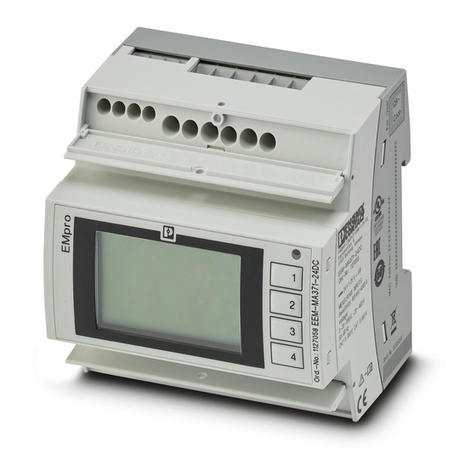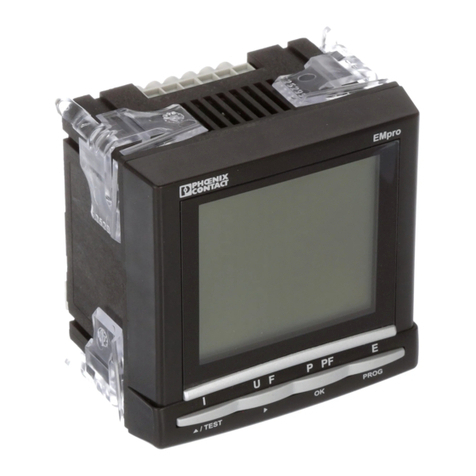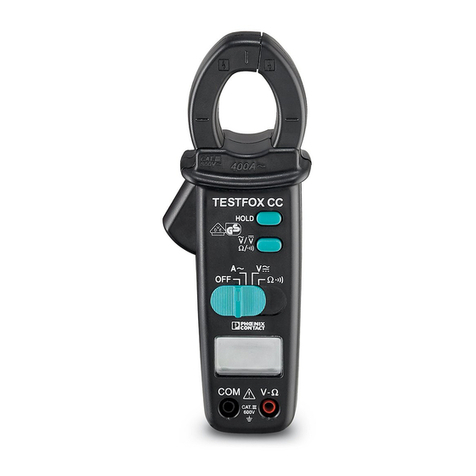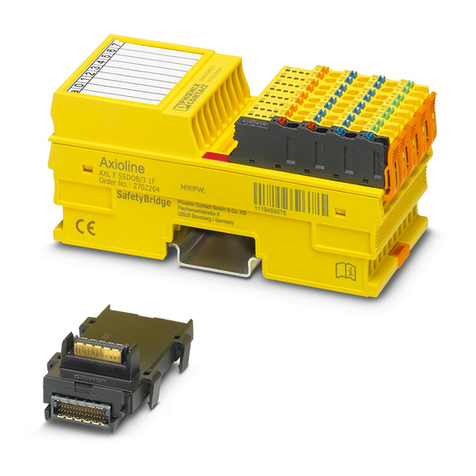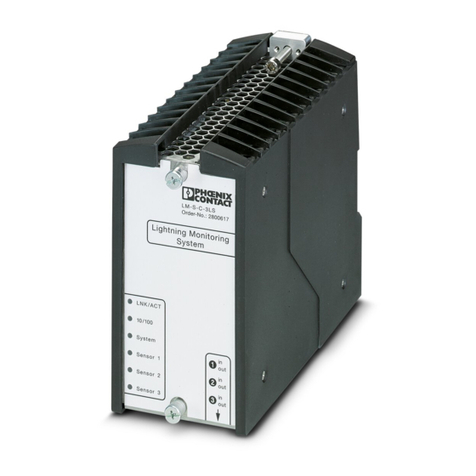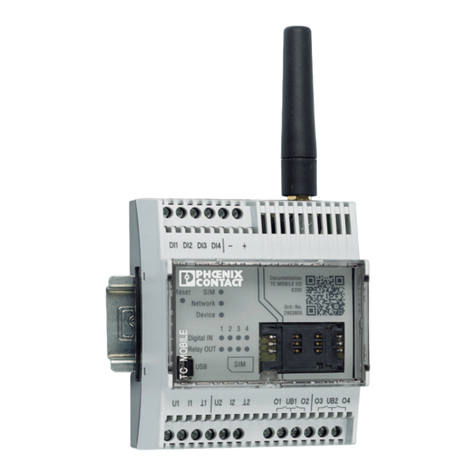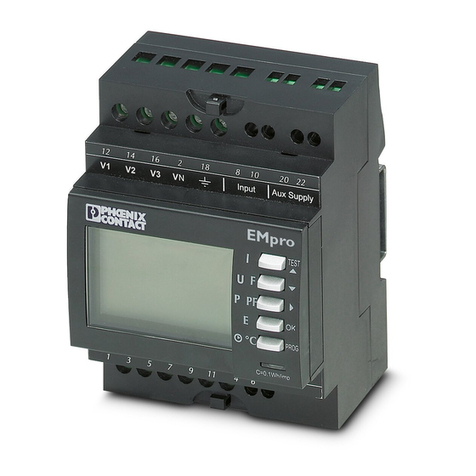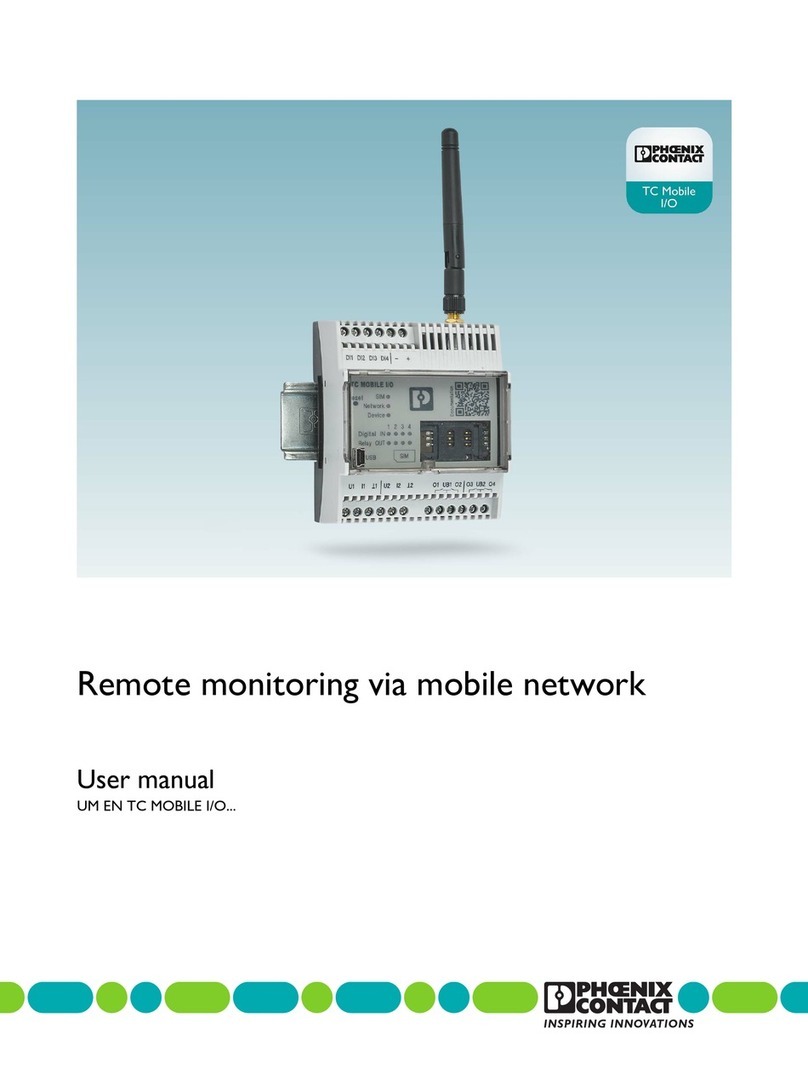
Solarcheck family
6PHOENIX CONTACT 105608_en_00
6 Installation ................................................................................................................................39
6.1 Connection description........................................................................................ 39
6.2 Measuring category and notes on insulation ....................................................... 43
6.3 Control cabinet .................................................................................................... 43
6.4 Cabling ................................................................................................................ 44
6.4.1 Installation instructions ......................................................................... 44
6.4.2 Material requirements .......................................................................... 48
6.4.3 Cable lengths and conductor cross sections .......................................48
6.5 Installing the SCK-C-MODBUS communication module...................................... 49
6.5.1 Addressing the SCK-C-MODBUS communication module .................. 49
6.5.2 Connecting the SCK-C-MODBUS communication module .................. 52
6.6 Installing SCK-M-I-xx current measuring modules............................................... 54
6.7 Installing the SCK-M-U-1500V voltage measuring module ................................. 57
6.7.1 PE connection ...................................................................................... 58
6.7.2 Connecting the measuring module to the SCK-M-I-8S-20A
Solarcheck current measuring module ................................................. 59
6.7.3 Connecting the measuring module outside of the
Solarcheck device range ...................................................................... 60
6.7.4 Connecting voltage measurement ....................................................... 60
6.8 Power supply for the Solarcheck devices ........................................................... 61
6.8.1 Design of the power supply .................................................................. 61
6.8.2 Design of a separate power supply for the SCK-M-U-1500V
voltage measuring module ................................................................... 63
7 Startup .....................................................................................................................................65
8 Additional functions ..................................................................................................................67
8.1 Energy-saving mode............................................................................................ 67
8.2 Locate function .................................................................................................... 68
8.3 System calibration ............................................................................................... 69
9 Installation examples ...............................................................................................................71
9.1 Example 1 ........................................................................................................... 71
9.2 Example 2 ........................................................................................................... 72
9.3 Example 3 ........................................................................................................... 73
9.4 Example 4 ........................................................................................................... 74
10 Troubleshooting .......................................................................................................................75
10.1 Diagnostics and error removal............................................................................. 76
10.2 Additional notes................................................................................................... 82
